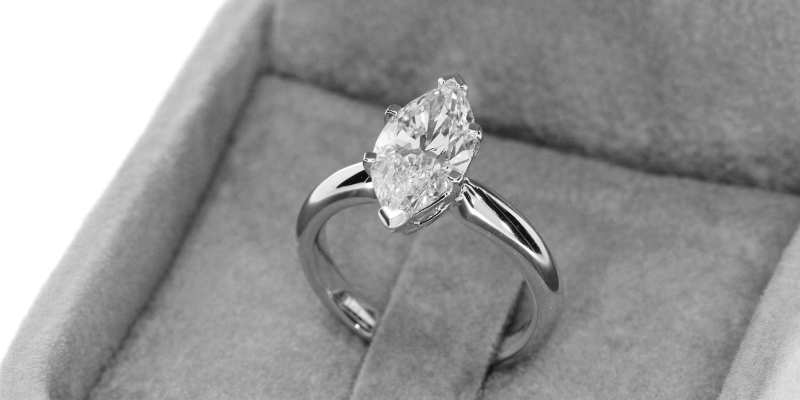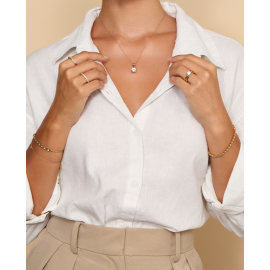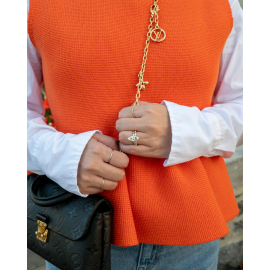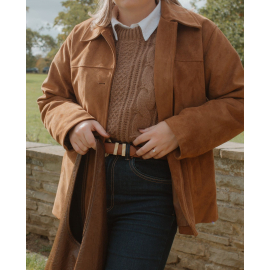Price match guarantee

We’ve teamed up with Klarna to provide flexible payment options, allowing you to shop the way you want. With Klarna, you can split your payment into 3 instalments or choose to pay later, making your shopping experience smoother and more convenient. Your order total must be between £100 and £499 to qualify.

We’ve teamed up with Klarna to provide flexible payment options, allowing you to shop the way you want. With Klarna, you can split your payment into 3 instalments or choose to pay later, making your shopping experience smoother and more convenient. Your order total must be between £100 and £499 to qualify.

May 07, 2021 | by Admin
It is law within the UK that every item of precious metal sold such as Platinum, Gold, Silver is stamped labelling the item with the type of metal it is. Platinum pieces which weigh less than 0.5 grams, 18ct Gold and Palladium pieces weighing less than 1.0 gram and Silver pieces weighing less than 7.78 grams are except from hallmark.
At Diamonds Factory all our products are hallmarked as per UK hallmarking law from London Assay Office (The GoldSmith Company)
The Goldsmiths' Company Assay Office is the oldest assay office in the United Kingdom. It has provided hallmarking services since The Goldsmiths' Company was founded in the 1300s. The company received its royal charter in 1327 and ranks 5th in order of precedence of the 12 Great Livery Companies of the City of London.
Hallmarking dates back to the 1300s when Edward I of England passed a law requiring any item made of silver, which was offered for sale, to be at least of equal quality as that of the coin of the realm (silver currency). The wardens of The Goldsmiths' Company were tasked with visiting workshops in the City of London to assay (test) silver articles. If these articles were found to be below standard they were originally destroyed and the metal forfeited to the King. If they passed, each article received the King's mark of authentication - the mark of a leopard's head. By 1478, there were several hundred workshops and merchants manufacturing silver articles in the City of London. It was not possible for the wardens to visit them all so the merchants were ordered to bring their items to Goldsmiths' Hall for testing and marking and a permanent Assay Office was established in the building. This is the origin of the term hallmark - struck with the King's mark at Goldsmiths' Hall.
In 1544 the Goldsmith's Company adopted the King's mark as their town mark and the mark of the leopard's head is now internationally recognised as the mark of this assay office.
The Goldsmiths's Company Assay Office is still based at Goldsmiths's Hall and remains the oldest company in Britain to be continually trading from the same site. However, it also has two satellite offices; at Greville Street in Hatton Garden in the heart of the London jewellery quarter and within a high security complex near London's Heathrow airport. It now has a new off-site facility within the Dalston-based jewellery manufacturer, Allied Gold. This is the first time in the Assay Office's 700 year history that it has opened permanent hallmarking services on a customer's premises.
In addition to hallmarking, the office has now expanded its range of services to support the jewellery trade and enforcement authorities. It offers a variety of specialist analytical services including nickel, lead & cadmium testing, antique silver dating, non-destructive compositional analysis, plating thickness measurement and a melt and assay service for scrap precious metal carried out in their fully independent on-site laboratory. Other services offered are a jewellery valuation service, laser marking, trading standards assistance, high quality photography and a comprehensive range of training and educational seminars, lectures and specialist events.






The beautiful marquise diamond is a unique diamond shape that can transform the appearance of an entire piece of jewellery. For this reason, if you are looking for a unique shape for an engagement ring, a marquise cut diamond could be a good option. In our marquise cut diamond buying guide, we explore everything you need to know about this impressive diamond shape.
What is a marquise diamond?
A marquise diamond is an elongated elliptical shape with two pointed ends. It is the unique shape of this diamond cut that makes it so special. Marquise diamonds are a fancy cut and typically have around 58 facets.
Because of their elongated shape, marquise diamonds usually look larger than diamonds of the same carat weight - making them a good option for those who want their diamond to look bigger. Plus, marquise diamond rings are flattering on the finger as they give the illusion of longer fingers.
Marquise diamond history
Marquise diamonds originated in the 18th Century where King Louis XIV of France commissioned a jeweller to create a diamond shape to resemble the lips of his love Jean Antoinette Poisson, the Marquise de Pompadour.
Marquise diamonds evolved slightly through the years, but its signature boat shape remained. Because its shape resembles a boat, it would sometimes be referred to as Navette, meaning 'small ship' in French.
Marquise diamond popularity
The marquise diamond may be a less popular shape, but there is a lot to love about it. There are several reasons why you may consider a marquise diamond engagement ring and one being if you prefer styles that are a little more unique. Marquise diamond earrings also make a great gift for a loved one. Although marquise diamonds are not as popular as round diamonds, many celebrities have worn marquise diamond engagement rings, such as Catherine Zeta-Jones and Jennifer Lopez.
Marquise diamond cut guide
When considering a marquise cut diamond, you should consider its length to width ratio and symmetry to get the perfect shape. Of course, every diamond is unique, and the one you select should meet your taste.
Marquise cut diamond - colour
Like every diamond, it is a good idea to consider colour when buying a marquise diamond. Marquise diamonds tend to show colour more than most other diamond shapes. For example, a G colour marquise may look closer to an H colour diamond. For this reason, choose the colour of your diamond carefully.
Marquise cut diamond - symmetry
Symmetry is another thing to consider when buying a marquise diamond. This diamond shape is less forgiving than other shapes and will be easier to spot if it isn't symmetrical. We recommend selecting a diamond with Excellent or Very Good symmetry for this reason.
Marquise cut diamond - length to width ratio
Length to width ratio is another thing you may wish to consider when buying a marquise diamond. The most popular length to width ratios for marquise diamonds are between 1.70-2.15, and it is determined by dividing the length of the diamond by its width. It is good to note that no marquise shape is superior to another, and the one you select should complement your jewellery setting.
Marquise cut diamond - clarity
Diamond clarity, like with all diamonds, is important to consider when choosing a marquise diamond. You will want to consider where inclusions are present within the diamond, as any inclusions in the middle of the stone will be a lot more visible than any at the tips.
Why choose a marquise cut diamond?
There are many reasons to choose a marquise cut diamond. Not only are they beautifully unique, but they are flattering when worn on the finger and can also appear larger than other diamond shapes. A marquise diamond can transform any jewellery piece into something extraordinary.
Full Bezel Setting Thin Engagement Ring
From £593
Full Bezel Setting Large Engagement Ring
From £773
White Gold Round Side Stone Diamond Engagement Ring
From £1,700
2 Prong Setting Plain Engagement Ring
From £455
Prong Setting Solitaire Diamond Engagement Ring
From £556
Prong Round Side Stone Diamond Engagement Ring
From £984